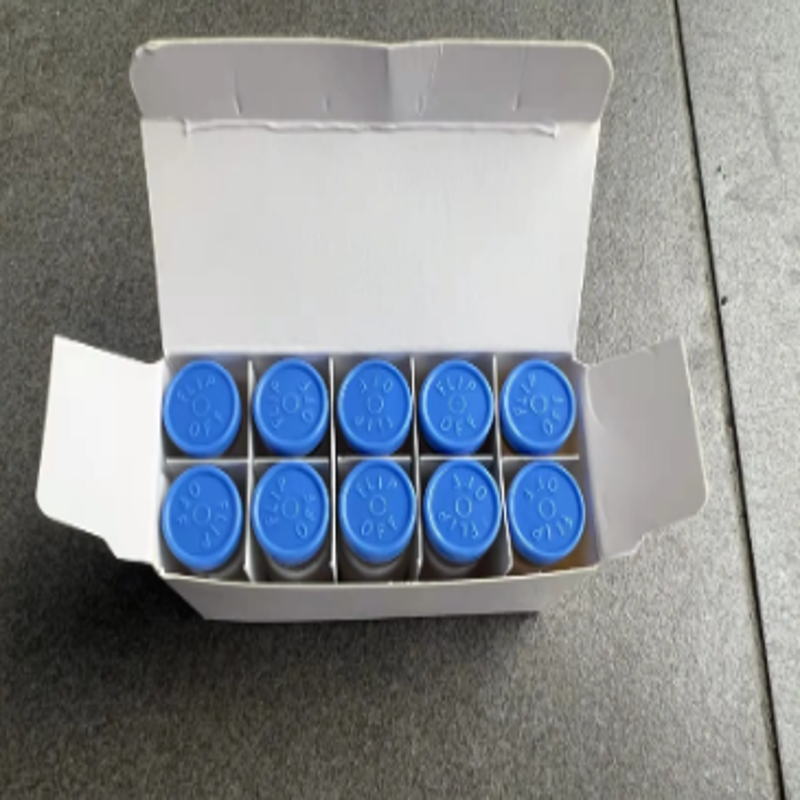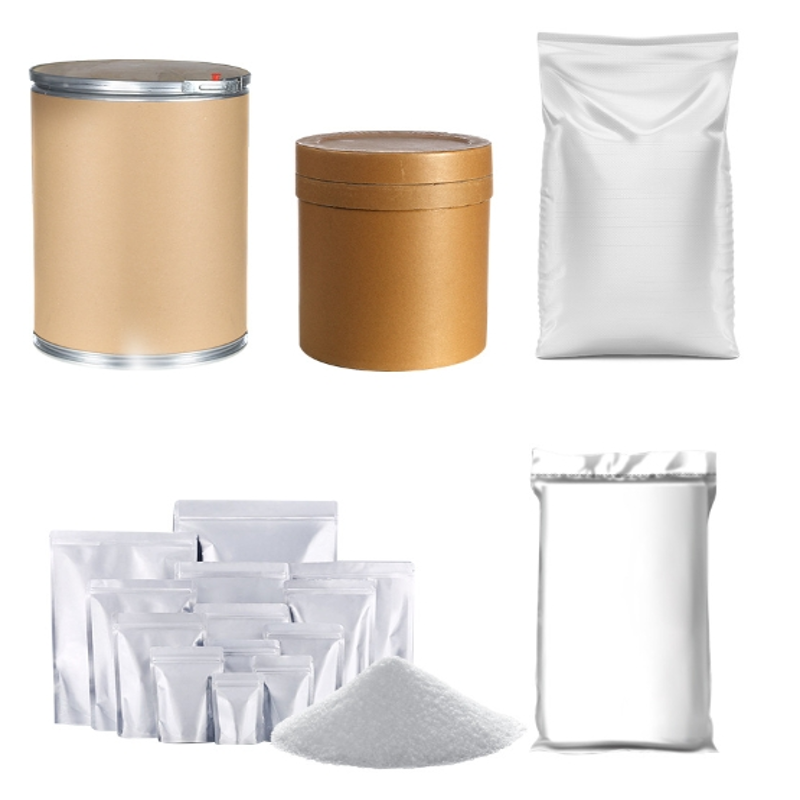-
Categories
-
Pharmaceutical Intermediates
-
Active Pharmaceutical Ingredients
-
Food Additives
- Industrial Coatings
- Agrochemicals
- Dyes and Pigments
- Surfactant
- Flavors and Fragrances
- Chemical Reagents
- Catalyst and Auxiliary
- Natural Products
- Inorganic Chemistry
-
Organic Chemistry
-
Biochemical Engineering
- Analytical Chemistry
- Cosmetic Ingredient
-
Pharmaceutical Intermediates
Promotion
ECHEMI Mall
Wholesale
Weekly Price
Exhibition
News
-
Trade Service
The development of drugs for advanced urothelial carcinoma has been relatively slow, and platinum-containing chemotherapy regimens are still the standard treatment choice
for advanced urothelial carcinoma clinically.
In recent years, with the approval of a number of new therapeutic drugs, traditional histopathological diagnosis can no longer meet the clinical needs, and the clinical application of molecular pathological detection is promoting the development of
precision treatment for advanced urothelial carcinoma.
Yimaitong specially invited Professor Yu Wei from Peking University First Hospital to interpret the molecular typing of advanced urothelial carcinoma and the current main drug targets, and discuss the value of
molecular pathological detection for clinical drug decision-making in patients with advanced urothelial cancer.
Expert profiles
Professor Yu Wei
Chief physician, doctoral supervisor
Department of Urology, Peking University First Hospital
Member of the Standing Committee of the Urothelial Cancer Committee of the Chinese Society of Clinical Oncology
Member of CUA Basic Science Group
Member of CUA Urine Control Young and Middle-aged Physicians Alliance
Member of the Oncology Group of the Urology Professional Committee of the Chinese Association of Integrative Medicine
Member of the Standing Committee of the Urology Committee of the Beijing Cancer Prevention and Treatment Association
Member of the Youth Committee of the Oncology Branch of Beijing Medical Association
From EAU guidelines, the clinical treatment pattern of advanced UC was viewed
Urothelial carcinoma (UC) is a tumor originating from the transitional epithelium of all urinary tracts, including renal pelvis, ureters, bladder and urethra, among which bladder urothelial carcinoma is the most common in urology in China [1].。 Although the incidence of Upper urinary tract urothelial carcinoma (UTUC) reported in Europe and the United States only accounts for 5%~10% of urothelial cancer, the proportion is higher in the Chinese group [1].
。 The preliminary survey results of inpatients in 32 large hospitals in China in 2018 showed that the proportion of UTUC in urothelial carcinoma was 9.
3%~29.
9%, with an average of 17.
9%, and the difference in this proportion distribution may be related to different pathogenesis and clinical characteristics [1].
According to the European Association of Urology (EAU) guidelines for late UC [2].
First-line treatment of platinum-tolerant patients is mainly platinum-containing chemotherapy, and second-line therapy includes immune checkpoint inhibitors and FGFR tyrosine kinase inhibitor erdatinib; For patients with platinum intolerance, first-line therapy is with immune checkpoint inhibitors; For patients who are tolerant or intolerant to platinum, subsequent treatment can choose from erdatinib, Enfortumab Vedotin (EV), Sacituzumab govitecan (SG), and chemotherapy according to previous treatment
regimens.
Fig.
1 EAU guidelines recommend advanced UC treatment, it can be seen that platinum-containing chemotherapy is still the standard treatment
choice for advanced UC, and with the application of new therapeutic drugs such as immune checkpoint inhibitors, erdatinib and ADC drugs, how to optimize the treatment options of advanced UC is an urgent clinical problem Among them, molecular typing based on biomarkers is one of
the exploration directions to guide clinical drug decision-making.
Guidelines for molecular and genomic testing of advanced UC are recommended
The EAU guidelines [2] describe predictive biomarkers for advanced UC, focusing on FGFR gene alterations, PD-L1 detection, and TMB (tumor mutation burden).FGFR gene alterations: The most important advance in recent years has been the recognition that FGFR3 gene alterations, including mutations and gene fusions, can be used as predictive markers of response to FGFR inhibitor therapy
.
Ideally, screening patients with metastatic UC for FGFR3 gene alterations is recommended at the time of diagnosis of metastatic disease to optimize treatment options, including participation in clinical studies
.
PD-L1 expression levels: Several studies have evaluated PD-L1 expression by immunohistochemistry with mixed results to date, which may be partly related to
the different antibodies and evaluation components of various scoring systems (i.
e.
, tumor cells, immune cells, or both).
A major limitation of PD-L1 staining is related to
the response to immune checkpoint inhibitors in some PD-L1-negative patients.
TMB: In a variety of malignancies, neoantigen burden and TMB are associated
with responses to immune checkpoint inhibitors.
In small, single-arm trials, high TMB was associated with the response of metastatic UC to immune checkpoint inhibitors, but this result has not been confirmed
in randomized controlled trials.
At the same time, the EAU guidelines [2] state that other markers that have been evaluated for predicting immune checkpoint inhibitor responses include molecular isotypes, immunohistochemical CD8 expression, and other immune gene cell signatures
.
Recent researchers have focused on exploring the importance of matrices, including the role
of TGFs (transforming growth factors) in predicting immune checkpoint blockade.
In addition, the NCCN guideline expert panel recommended molecular and genomic testing for stage IVA and IVB bladder cancer (which could be considered for stage IIIB), suggesting that molecular and genomic testing should be performed as early as possible, preferably at the time of diagnosis of advanced bladder cancer, to aid treatment decisions and avoid delays in subsequent treatment [3].
。
Figure 2 The research exploration of new drugs recommended
by NCCN guidelines and EAU guidelines is promoting the establishment of precision treatment concepts for advanced UC, and provides a solid scientific basis for in-depth research and analysis of muscle-invasive bladder cancer (MIBC) and UTUC molecular typing characteristics
。
Molecular typing characteristics of MIBC and UTUC
At the molecular level, MIBC is a heterogeneous disease characterized by genomic instability and high mutation rates [4].Transcriptome analysis facilitates the classification of molecular subtypes of bladder cancer, allowing precise stratification
of patients based on prognosis and treatment options.
Because non-muscle-invasive bladder cancer (NMIBC) and MIBC are remarkably unique, the researchers proposed a "dual pathway" model
that considers both histopathological and molecular features.
This model suggests that NMIBC develops through epithelial hyperplasia and recruitment of branch blood vessels, while MIBC is derived from flat dysplasia and carcinoma in situ.
However, significant heterogeneity in clinical behavior remains unexplained by a single model [5].
At present, multiple research teams have classified the molecular typing of bladder cancer, and these classification systems have improved our understanding of the molecular biology of bladder cancer, but the diversity of subtypes hinders the clinical application
of these systems.
These classification systems share many common features, including subtype-specific molecular signatures, and overlap between subtypes of different classification systems has been observed
.
When initially defining the MIBC classification, Lerner et al.
proposed a basal/squamous epithelial subtype and reported a muscular invasive subtype
with features of urothelial differentiation.
However, differences in the number of cases, number of subtypes, and nomenclature of the six previously published classification systems hinder practical clinical application, so the establishment of a unified consensus on molecular subtypes is helpful for clinical treatment decisions [4].
Based on this background, the international consensus on MIBC molecular typing confirmed six MIBC types< as detailed in Figure 2>, which differ in potential oncogenic mechanisms, immune and stromal cell infiltration, and histological and clinical features
.
The system facilitates the exploration of predictive biomarkers in prospective clinical trials and also provides theoretical support for the molecular typing of bladder cancer [4].
Fig.
3 The six molecular types
of MIBC UTUC have many similar clinicopathological features to bladder cancer, but UTUC itself also has its own special points
.
UTUC is more aggressive and has a poor prognosis, and 22%~47% of patients still have intravesical recurrence during follow-up [6].
In addition, UTUC originates from the mesoderm of the embryo and may be associated with Lynch syndrome (hereditary non-polyposis colorectal cancer); It has also been suggested that UTUC may be induced by exposure to aristolochic acid [6].
In 2021, Seishi Ogawa's team from Kyoto University in Japan published a study of integrated genomic analysis (Molecular classification and diagnostics of upper urinary tract urothelial carcinoma) in Cancer Cell [7]
。
In this study, 199 UTUC tumor samples were integrated for genomic analysis, and the results showed that whole exome sequencing and array-based copy number analysis divided UTUC into 5 molecular subtypes, characterized by FGFR3-activating mutation (FGFR3), RAS gene activating mutation (RAS), TP53 mutation or MDM2 amplification leading to inactivation of the TP53 pathway (TP53/MDM2), High mutation levels (hypermutations) or no significant defects in the FGFR3, RAS, or TP53 pathway (triple-negative).
Each subtype is associated with different biological and clinical features and may have different sensitivities to existing and novel therapies [7,8].
At the same time, urine sediment DNA sequencing has high diagnostic value for UTUC, with a sensitivity of 82.
2% and a specificity of 100%.
The above results provide a solid theoretical basis
for better diagnosis and management of UTUC in clinical practice.
Fig.
4 The results of the above two molecular subtypes
of UTUC provide a more sufficient scientific basis for the molecular typing of MIBC and UTUC, and have high clinical reference value for prognosis judgment and treatment selection.
However, the long-term prognosis of MIBC or UTUC of each molecular type and the long-term prognosis of patients and the sensitivity of therapeutic drugs still need to be verified
by large samples and multicenter studies.
brief summary
Urothelial carcinoma is a highly heterogeneous type of tumor, and research has been relatively slow over the past few decades, and platinum-based chemotherapy remains the standard of care
.
Immune checkpoint inhibitor therapy, ADC drugs, and FGFR inhibitors bring more treatment options to patients with advanced UC, and also raise questions about how to optimize the treatment regimen of advanced UC
.
At present, international guidelines have clearly stated that molecular and genomic examination (especially FGFR gene changes) should be performed as early as possible in patients with advanced UC, which can help clinical decision-making and protocol development
.
Although the molecular typing characteristics of MIBC and UTUC have been further elucidated by studies on the whole genome analysis of late UC, more research evidence is still needed to confirm their clinical application value, and ultimately achieve the goals
of accurately identifying drug targets, subdividing the patient population of advanced UC, and optimizing clinical treatment decisions.
References:
1.
HUANG Jian, WANG Jianye, KONG Chuze, et al.
Guidelines for the diagnosis and treatment of urology and andrological diseases in China 2021.
2.
EAU Guidelines on Muscle-invasive and Metastatic Bladder Cancer.
European Association of Urology 2022.
3.
NCCN Clinical Practice Guidelines in Oncology (NCCN Guidelines®)Bladder Cancer Version 2.
2022.
4.
Kamoun A, de Reyniès A, Allory Y, et al.
A Consensus Molecular Classification of Muscle-invasive Bladder Cancer.
Eur Urol.
2020 Apr; 77(4):420-433.
5.
MatulloG, Naccarati A, Pardini B.
MicroRNA expression profiling in bladder cancer: the challenge of next-generation sequencing in tissues and biofluids.
Int J Cancer.
2016; 138:2334-2345.
6.
Zeng Jin.
Cancer Cell:Molecular typing of upper tract urothelial carcinoma (UTUC) and new methods for molecular diagnosis[J].
Journal of Modern Urology,2022,27(03):262+267.
)
7.
Fujii Y, Sato Y, Suzuki H, et al.
Molecular classification and diagnostics of upper urinary tract urothelial carcinoma.
Cancer Cell.
2021 Jun 14; 39(6):793-809.
e8.
8.
McConkey DJ, Singla N, Pierorazio P, Lombardo K, Matoso A, Hoffman-Censits J.
Molecular subtypes of upper tract urothelial cancer: Setting the stage for precision therapy.
Cancer Cell.
2021 Jun 14; 39(6):745-747.
Editor: Shirley Typesetting: Yuna Execution: Rudolf This platform is designed to deliver more medical information
to healthcare professionals.
The content published on this platform cannot replace professional medical guidance in any way, nor should it be regarded as diagnosis and treatment advice
.
If such information is used for purposes other than understanding medical information, this platform does not assume relevant responsibilities
.
The content published by this platform does not mean that it agrees with its description and views
.
If copyright issues are involved, please contact us and we will deal with
it as soon as possible.







